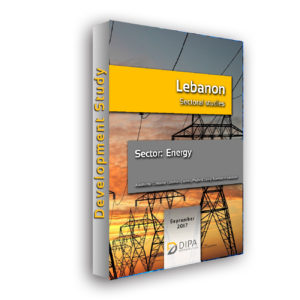 Lebanon is one of the smallest countries in the region, but strategically located on the Eastern Mediterranean, it is an important commercial hub for the Middle East. A heterogeneous country, highly divided along both religious and confessional lines, Lebanon has a relatively young population. The Lebanese system of government reflects a combination of the prime ministerial and presidential systems. A lengthy power vacuum was recently filled with the appointment of Michel Aoun as President and Saad Hariri as Prime Minister.
Lebanon is one of the smallest countries in the region, but strategically located on the Eastern Mediterranean, it is an important commercial hub for the Middle East. A heterogeneous country, highly divided along both religious and confessional lines, Lebanon has a relatively young population. The Lebanese system of government reflects a combination of the prime ministerial and presidential systems. A lengthy power vacuum was recently filled with the appointment of Michel Aoun as President and Saad Hariri as Prime Minister.
The business environment in Lebanon is relatively restrictive, with the World Bank ranking it 126 out of the 189 countries surveyed in its Doing Business 2017. In terms of Global Competitiveness, the World Economic Forum ranks Lebanon as the 101st most competitive nation in the world (out of 138 economies).
There are strong indications that there is natural gas, and possibly oil, to be exploited in offshore Lebanese territory, and Lebanon has the potential to emerge as a gas producing country in the medium-term future. Currently, the Lebanese are fully reliant on energy imports to meet domestic demand for energy. Lebanon suffers from low energy efficiency, and it is vulnerable to frequent electricity cuts, due to ageing infrastructure and insufficient generation and transmission capacity, combined with a rising power demand. The use of renewable energy in Lebanon is limited, but GoL is examining ways to diversify its energy sources, with a view to reduce its reliance on imported energy products. This study is a part of the Development Study and analyses the energy sector.
1. Country Profile
1.1 History of Lebanon
1.1.1 Early History
1.1.2 The Civil War
1.1.3 Recent Developments
1.1.4 Relationships with neighbouring states
1.2 Geography
1.2.1 Area and Boundaries
1.2.2 Topography
1.2.3 Land Use and Water Resources
1.2.4 Environmental Concerns
1.3 People and Society
1.3.1 Population and National Identity
1.3.2 Demographics
1.3.3 Societal Characteristics
1.4 Government
1.4.1 Framework of Government
1.4.2 Executive Branch
1.4.3 Legislative Branch
1.4.4 Judicial Branch
1.4.5 Political Parties and Leaders
1.5 Main Infrastructure
1.5.1 Transportation
1.5.2 Tele Communications
1.5.3 Energy
1.6 Key Industries and National Resources
2. Energy
2.1 Overview of Hydrocarbons: Consumption and Imports
2.1.1 Hydrocarbon Exploration
2.2 Electricity
2.2.1 Production, transmission and distribution of electricity
2.2.2 Regulation of the Electricity Market
2.3 Competitive landscape
2.3.1 Key Players in Oil/Refined Petroleum Products Industry
2.3.2 Key Players in Natural Gas Industry
2.3.3 Key Players in Electricity Industry
2.4 Challenges and prospects
3. Doing Business
3.1 Starting a Business
3.2 Dealing with Construction Permits
3.3 Getting Electricity
3.4 Registering Property
3.5 Getting Credit
3.6 Protecting Minority Investors
3.7 Paying Taxes
3.8 Trading across Borders
3.9 Enforcing Contracts
3.10 Resolving Insolvency
3.11 Measuring competitiveness by the World Economic Forum
3.12 Corruption Index
3.13 Public – Private Partnerships
